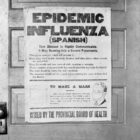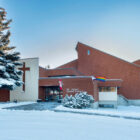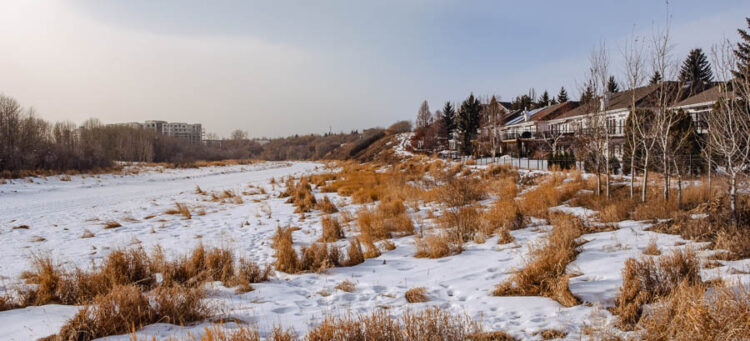
Then & Now
Oakmont
By Gene Kosowan
March, 2023
One of the city’s younger neighbourhoods bears a vibrant past.
St. Albert’s municipal maps portray the outline of Oakmont as somewhat resembling a distorted spade symbol you would otherwise find on playing cards. However, ask any resident living in the neighborhood: landing a home here requires at the very least an ability to conduct one’s own affairs with a full deck. Toronto-based livability assessors AreaVibes ranked Oakmont as one of the city’s most expensive neighborhoods, ranking second to Kingswood.
Fat wallets provide residents with not only homes, but also access to a score of picturesque amenities in Oakmont, bordered by the Sturgeon River to the east and Bellerose Drive to the west. The neighbourhood features an abundance of green space dedicated to parkland, including Red Willow Park, located on the west bank of the river. At last count, nearly 3,500 folks live in Oakmont, a relatively new neighborhood, but one that still has a unique history.
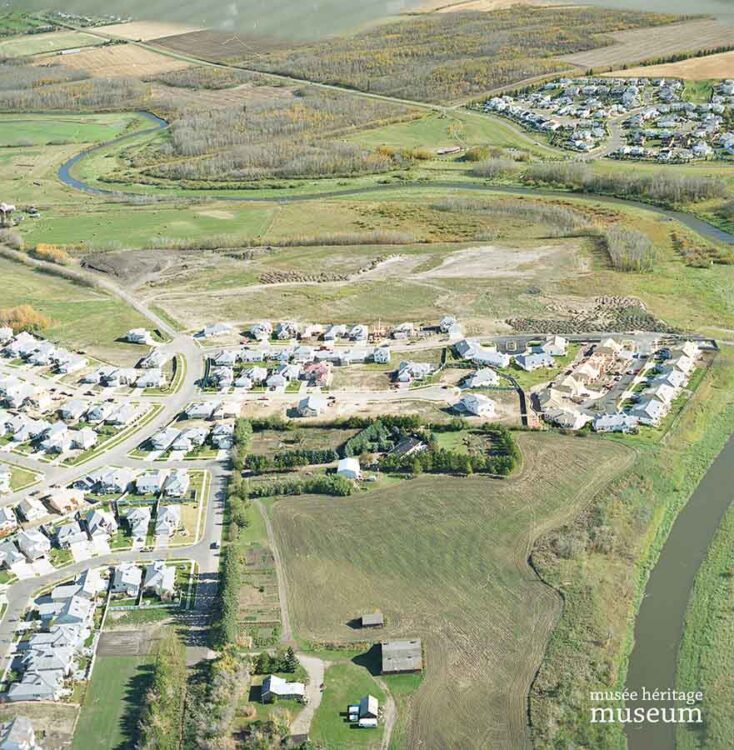
1870s-1920s
In 1871, a decade after Father Albert Lacombe founded St. Albert, the federal government signed Treaty 6 with the Metis and aboriginals who first inhabited the prairies. Once the ink dried, the Crown made much of that land available for development to European settlers. Some of the first to set up roots in what is now Oakmont included the families of Hudson’s Bay Company trader Olivier Bellerose, Yukon gold prospector Pierre Ouelette, and Catherine Onesti, who was cherished by the community for donating a bell to a local church.
According to St. Albert’s 2020 Growth Management Study, the community was already a town of some 600 people when it decided to annex huge parcels of land surrounding the community in 1913. That annexed land − that included pre-Oakmont territory – which bordered the town of 600, was nearly five times the size of the tiny community in terms of area.
1920s-1950s
In 1920, the town dropped plans to annex the land including the future neighborhood of Oakmont. Nearly three decades later, when St. Albert’s population increased to roughly 1,000 inhabitants, the community’s northern boundary had already expanded to border what is now Oakmont.
In 1928, the agrarian couple of Peter and Mary Sernowski were given 100 acres of land, which they cultivated to produce hay and create a community garden. Fast forward to 1959, when Ted and Lois Hole started Hole’s Greenhouses & Gardens Ltd. The family converted their red barn into retail space on Bellerose Drive and would soon become a booming business.
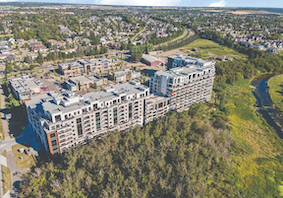
1960s-1990s
The 100 acres owned by Peter and Mary Sernowski was transferred to the couple’s daughter June and her husband Robert Haudenschild in the 1970s, setting the stage for a major deal involving the inheritors years later. Also trading hands was Hole’s Greenhouses, already a lucrative operation, to their children, Jim and Bill Hole, as well as Bill’s wife Valerie in 1979.
By 1980, St. Albert − which officially became a city in 1977 and boasting a population of nearly 32,000 − had annexed land that included Oakmont, where development intensified during the 1990s.
2000s-2010s
In 2011, the Haudenschilds sold land previously owned by the Sernowskis to Sarasota Homes, which eventually built The Orchard at Oakmont, a development project that created 32 single-family dwellings.
That same year, the Holes left their original retail space for a larger facility in the Enjoy Centre, leaving the space on the corner of Bellerose Drive and Boudreau Road available for commercial activity. Filling that void, developers proposed plans for high-end retailer complex The Shops at Boudreau in 2013, with the establishment officially opening two years later.
While commercial activity heightened in Oakmont, the same could hardly be said for education. The neighbourhood still didn’t have a school, an issue concerning both the city’s public and Catholic school boards. The two bodies shared 16 acres of land sanctioned for the school until the city stepped in to declare they were looking for another use of that property.
2020-Now
In 2020, construction was completed on the $26-million Botanica condominium, next to The Shops on Boudreau. The two-storey complex, boasting 126 suites, was plagued with delays when Boudreau Developments had to juggle resources to complete another project: Rogers Place in downtown Edmonton.The following year, Boudreau received civic approval to build Riverbank Landing, a five-building residential and commercial development. Construction on the project, which has since added another commercial building in its blueprints, began in 2022.t8n






